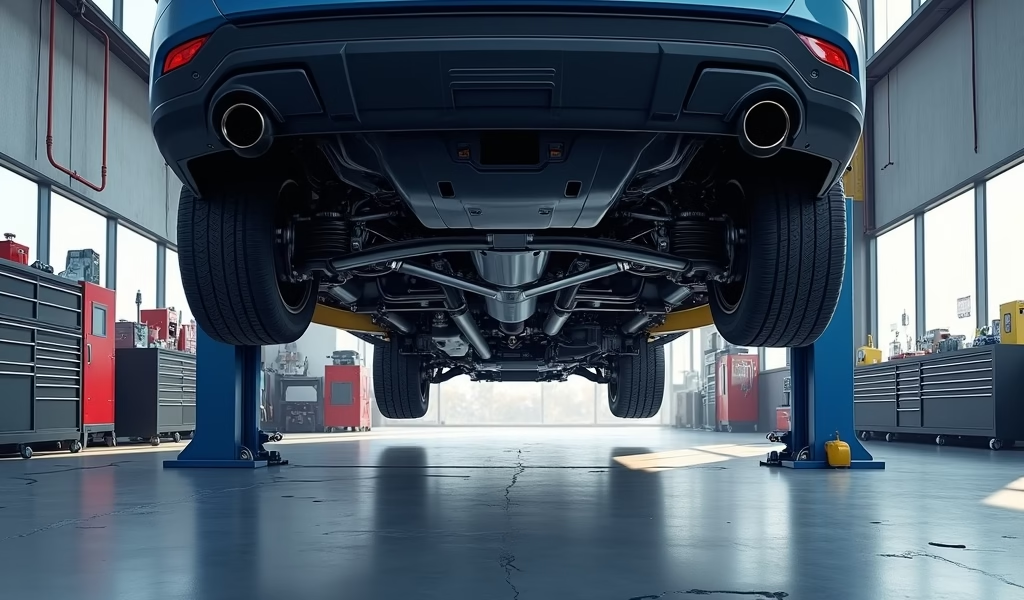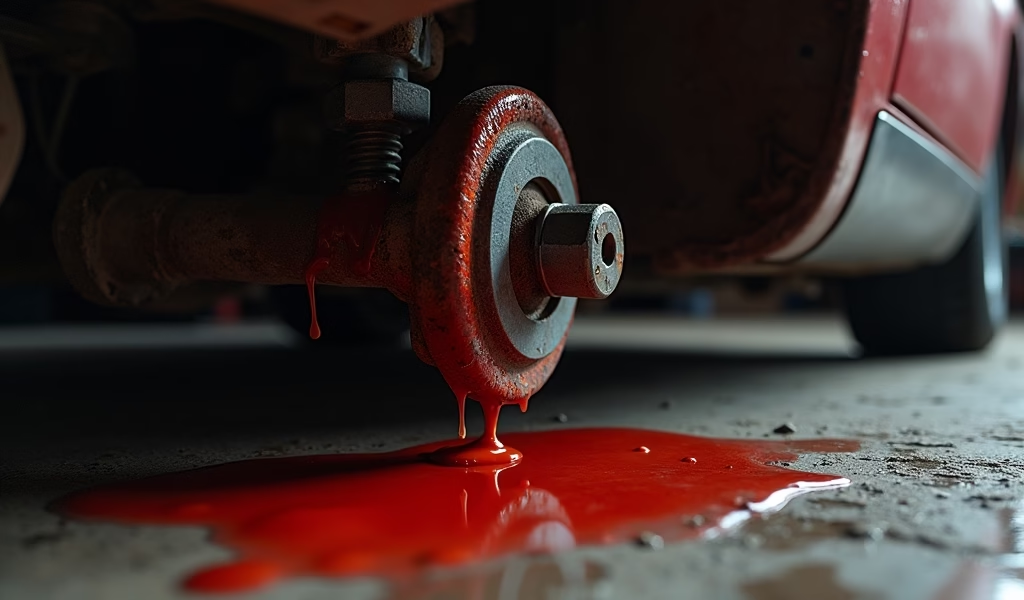Overview
This article provides a detailed guide to slip yoke transmission extensions, covering their function, common problems, diagnosis methods, and repair procedures for both DIY enthusiasts and those seeking professional help. The author emphasizes early detection of issues like fluid leaks and vibrations, proper maintenance practices, and when professional intervention is necessary to prevent more extensive drivetrain damage.
Table of Contents
- Understanding Slip Yoke Transmission Extensions
- Signs of Slip Yoke Problems
- Diagnosing Slip Yoke Issues
- Common Causes of Slip Yoke Failures
- DIY Slip Yoke Repair Guide
- Preventative Maintenance Tips
- When to Call a Professional
- Conclusion
- Frequently Asked Questions
Understanding Slip Yoke Transmission Extensions
The slip yoke transmission extension is a crucial component in your vehicle’s drivetrain that often gets overlooked until problems arise. I’ve been working on transmissions for over 20 years, and I can tell you this small but mighty part plays a significant role in your car’s performance and longevity.
Simply put, a slip yoke is the component that connects your transmission to your driveshaft. Unlike fixed connections, the “slip” part of its name comes from its ability to slide in and out slightly as your suspension travels up and down. This telescoping action prevents your driveshaft from binding or breaking when your vehicle’s suspension compresses and extends during normal driving.
Think of it as a mechanical shock absorber for your drivetrain. When you hit a pothole or go over a speed bump, your suspension compresses, changing the distance between your transmission and rear axle. The slip yoke accommodates these changes by sliding in and out of the transmission tail shaft, maintaining proper driveline geometry.
The design typically includes splines (gear-like teeth) that allow the yoke to slide while still transferring rotational power from the transmission to the driveshaft. This seemingly simple part handles immense forces and needs to maintain perfect alignment to prevent vibrations and premature wear.

Signs of Slip Yoke Problems
Over the years, I’ve seen countless vehicles come into my shop with slip yoke issues that owners initially mistook for more serious problems. Recognizing the warning signs early can save you thousands in repair costs. Here are the telltale indicators that your slip yoke might need attention:
Fluid Leaks
The most common symptom I encounter is transmission fluid leaking from the rear of the transmission where the driveshaft connects. This reddish fluid typically indicates that the seal around your slip yoke has deteriorated, allowing fluid to escape. Even small leaks can eventually lead to transmission damage if fluid levels drop too low.
Driveline Vibrations
If you’re feeling vibrations that increase with vehicle speed, particularly around 55-70 mph, your slip yoke might be worn or damaged. These vibrations often feel different from tire balance issues – they typically transmit through the floorboard rather than the steering wheel.
I had a customer last month who spent hundreds on new tires thinking they would solve his vibration problem. Turned out his slip yoke splines were worn down, causing the driveshaft to wobble slightly at highway speeds.
Clunking Sounds
Do you hear a distinct “clunk” when shifting from drive to reverse or when accelerating from a stop? That’s often caused by excessive play in a worn slip yoke. The sound occurs when power is applied and the drivetrain components “take up” the slack in the worn parts.
Transmission Shifting Issues
In some cases, a severely worn slip yoke can cause your transmission to feel like it’s slipping or shifting erratically. This happens because the proper alignment between transmission and driveshaft is compromised, affecting how power is transferred through the system.
If you’re experiencing any of these symptoms, it’s worth investigating your slip yoke before the problem worsens. A timely repair could prevent damage to your CV joints and other drivetrain components.
Diagnosing Slip Yoke Issues
Before you start ordering parts or scheduling repairs, let’s make sure the slip yoke is actually the culprit. I’ve seen too many folks replace perfectly good parts because they misdiagnosed the problem. Here’s my step-by-step process for confirming slip yoke issues:
Visual Inspection
Start with your vehicle on level ground. Look underneath at the connection point between the transmission and driveshaft. Check for any signs of red transmission fluid. Even small seepage indicates a potential seal issue.
If you’re comfortable getting under your vehicle (always using proper safety equipment like jack stands), take a closer look at the splines where the yoke enters the transmission. Excessive dirt buildup mixed with fluid is a classic sign of a leaking seal.
Check for Movement
With the engine off and the car safely supported, try to move the driveshaft up and down where it connects to the transmission. A small amount of movement is normal, but anything more than 1/8 inch usually indicates wear in the slip yoke assembly.
I remember working on a truck where the driveshaft had nearly 1/2 inch of play. The owner was convinced he needed a new transmission, but we fixed it with just a slip yoke replacement at a fraction of the cost.
Test Drive Assessment
If possible, have someone else drive while you listen for unusual sounds. Clunking noises during acceleration, deceleration, or gear changes often point to slip yoke issues. Vibrations that change with speed but not with engine RPM (while in neutral) typically indicate driveline problems rather than engine issues.
For a more precise diagnosis, some shops use a dial indicator to measure the actual movement in the slip yoke. According to Motor Magazine’s driveline diagnostics guide, movement exceeding 0.005 inches radially can cause noticeable vibration.
Common Causes of Slip Yoke Failures
Understanding why slip yokes fail can help you prevent future issues. In my experience, these are the most common culprits:
Seal Deterioration
The rubber seal that prevents transmission fluid from leaking around the slip yoke naturally degrades over time. Heat, age, and constant movement gradually break down the seal material. Most manufacturers expect these seals to last 100,000-150,000 miles under normal driving conditions.
Spline Wear
The splines that allow the slip yoke to slide while transferring power can wear down, especially if proper lubrication hasn’t been maintained. Once these splines become worn, the sloppy fit causes vibration and accelerated wear.
I’ve seen quite a few spline wear issues in vehicles that have been subjected to hard acceleration or heavy towing. The enormous torque places extra stress on these components.
Improper Driveline Angles
If your vehicle has been lifted or modified without properly adjusting the driveline angles, your slip yoke might be operating at an extreme angle. This causes accelerated wear and eventual failure. Proper driveline geometry is crucial for long component life.
Lack of Lubrication
The splined portion of the slip yoke requires proper lubrication to function smoothly. When this lubrication breaks down or becomes contaminated, metal-on-metal contact causes rapid wear. I’ve seen slip yokes fail prematurely simply because they weren’t properly lubricated during previous transmission services.
Damage from Impact
Off-road driving, hitting road debris, or even minor accidents can damage the slip yoke or affect its alignment. Sometimes this damage isn’t immediately apparent but leads to premature failure.

DIY Slip Yoke Repair Guide
If you’re reasonably mechanically inclined and have the proper tools, replacing a slip yoke is definitely a DIY-friendly project. I’ve walked many weekend mechanics through this repair over the phone. Here’s my step-by-step guide:
Tools and Materials You’ll Need:
- Jack and jack stands
- Socket set and wrenches
- Transmission fluid catch pan
- Replacement slip yoke (match exactly to your vehicle specifications)
- Replacement transmission seal
- Transmission fluid (check your owner’s manual for the correct type)
- Seal driver or installation tool (preferred but not always necessary)
- Penetrating oil
- Shop towels
- Safety glasses and gloves
Step 1: Preparation
Start with your vehicle on level ground. Engage the parking brake and block the front wheels. Disconnect the battery to ensure safety. Position your catch pan under the rear of the transmission to catch fluid that will drain when you remove the driveshaft.
Step 2: Driveshaft Removal
Before removing anything, use a paint marker to mark the orientation of the driveshaft to the differential and the transmission. This ensures proper reinstallation and prevents vibration issues. Then, remove the bolts connecting the driveshaft to the rear differential and carefully lower the driveshaft.
I can’t stress enough how important those alignment marks are. I once had a customer who skipped this step and ended up with terrible vibrations after reassembly. We had to try multiple positions before finding the original orientation.
Step 3: Slip Yoke Removal
With the driveshaft disconnected, you should be able to pull the slip yoke straight out of the transmission tail shaft. Sometimes it might be stuck due to residue buildup – a slight twisting motion while pulling usually does the trick. Be prepared for additional transmission fluid to drain when the yoke is removed.
Step 4: Inspect Components
Now’s the time to carefully examine the removed slip yoke. Check the splines for wear, scoring, or damage. Look for blued areas that indicate overheating. If the yoke shows significant wear, replacing it is the right call. Also inspect the inside of the transmission tail shaft for any visible damage.
Step 5: Replace the Seal
Using a seal removal tool or a careful approach with a flat screwdriver, remove the old transmission seal. Clean the seal area thoroughly, removing any old seal material or debris. Then, using a proper seal installation tool or a socket of similar diameter, carefully install the new seal until it’s flush with the transmission housing.
When installing the new seal, I like to apply a thin coat of transmission fluid to the lip of the seal. This provides initial lubrication and helps prevent damage during yoke installation. Make sure you don’t install the seal crooked – a properly seated seal is crucial for preventing leaks.
Step 6: Install the New Slip Yoke
Apply a light coating of transmission fluid to the splines of the new slip yoke. Carefully align the splines with those in the transmission output shaft and slide the yoke into place with a slight twisting motion. The yoke should slide in smoothly without forcing it.
When installing the driveshaft with universal joints, align your previous marks and secure the bolts to the proper torque specification. Improper torque can lead to vibration or component failure.
Step 7: Refill Transmission Fluid
Add the appropriate amount of transmission fluid to replace what was lost during the repair. Typically, you’ll need to add 1-2 quarts, but check your specific vehicle’s requirements. Start the engine and check for leaks around the new seal.
Step 8: Test Drive
Take your vehicle for a test drive, starting slowly and gradually increasing speed. Listen for unusual noises and feel for vibrations. A properly installed slip yoke should result in smooth operation without leaks or vibrations.
According to Engine Builder Magazine, most driveline vibrations after repair stem from improper reassembly rather than defective parts. Take your time and be methodical during installation.
Preventative Maintenance Tips
An ounce of prevention is worth a pound of cure, especially when it comes to your vehicle’s drivetrain. Here’s how to keep your slip yoke healthy for the long haul:
Regular Inspection
Make checking for transmission leaks part of your routine maintenance. A quick glance under your vehicle can catch small leaks before they become big problems. Pay special attention to the area where the driveshaft connects to the transmission.
I recommend checking this area every time you change your oil. Early detection of small seepage can save you from a major repair later on.
Maintain Proper Fluid Levels
Keep your transmission fluid at the proper level. Low fluid not only affects shifting but also reduces lubrication to the slip yoke splines, accelerating wear. Check your transmission fluid level regularly, especially if you notice even minor leaks.
Consider Periodic Lubrication
For vehicles used in severe conditions (towing, off-road, extreme temperatures), consider having your slip yoke removed, cleaned, and re-lubricated every 50,000-75,000 miles. This preventative maintenance can significantly extend the life of these components.
I had a customer with a heavy-duty truck used for towing who implemented this maintenance schedule. Ten years and 300,000 miles later, his original slip yoke was still in excellent condition while many similar vehicles needed replacements much earlier.
Address Vibrations Promptly
If you feel new vibrations or hear unusual noises, don’t ignore them. Early intervention often means a simple repair instead of a complex one. Driveline issues rarely improve on their own and typically worsen over time.
Proper Loading and Towing
Don’t exceed your vehicle’s rated towing capacity, as this puts excessive strain on drivetrain components including the slip yoke. When towing, accelerate gradually to minimize stress on these parts.
When to Call a Professional
While replacing a slip yoke is within reach for many DIY mechanics, there are situations where professional help makes more sense. Here’s when I recommend calling in the experts:
Complex Driveline Geometry
If your vehicle has been lifted or modified, or if you’re experiencing persistent vibrations despite basic repairs, the issue might involve driveline angles that require professional measurement and adjustment.
I once worked on a lifted Jeep that had gone through three slip yokes in two years. The real problem wasn’t the yokes themselves but improper driveline angles causing accelerated wear. Proper adjustment solved the issue permanently.
Internal Transmission Damage
If your diagnosis reveals potential internal transmission issues beyond the slip yoke itself, professional intervention is wise. Signs include metal particles in the transmission fluid or unusual noises that persist after yoke replacement.
Special Tools Required
Some vehicles require specialized tools for proper seal installation or yoke removal. If you don’t have access to these tools, the cost of purchasing them might exceed the savings of DIY repair.
Limited Experience or Facilities
If you don’t have a safe place to work on your vehicle or if you’re unsure about the procedure, there’s no shame in seeking professional help. Safety should always be your priority.
According to research from the Bureau of Transportation Statistics, the average vehicle on American roads is now over 12 years old. This makes quality maintenance more important than ever for keeping these aging vehicles reliable.
Conclusion
A failing slip yoke transmission extension doesn’t have to mean the end of the road for your vehicle or your budget. With proper diagnosis, the right parts, and careful work, you can resolve most slip yoke issues relatively easily and affordably.
Remember that early intervention is key – addressing those small leaks or minor vibrations before they develop into major problems can save you significant money and headaches down the road. Whether you choose to tackle the repair yourself or seek professional help, understanding how your slip yoke works and what to look for helps you make informed decisions about your vehicle’s maintenance.
I’ve seen countless vehicles roll out of my shop with a smooth, vibration-free drive after a simple slip yoke replacement – often to the amazement of owners who feared they needed a whole new transmission. With the information in this guide, you’re now equipped to address these issues with confidence.
Keep an eye on those transmission seals, maintain proper fluid levels, and listen to what your vehicle is telling you. Your drivetrain will thank you with many more miles of trouble-free service.
Frequently Asked Questions
How much does it cost to replace a slip yoke transmission extension?
Professional slip yoke replacement typically costs between $300-600, including parts and labor. DIY repairs can cost $150-250 for quality parts alone.
How long does a slip yoke typically last?
Under normal driving conditions, a slip yoke should last 150,000-200,000 miles. Heavy towing, off-roading, or poor maintenance can significantly reduce this lifespan.
Can I drive with a leaking slip yoke?
It’s not recommended to drive long-term with a leaking slip yoke as it can lead to transmission damage and eventual failure. Short distances to a repair facility are generally acceptable if the leak is minor.
Will a bad slip yoke damage my transmission?
Yes, a severely worn slip yoke can cause damage to the transmission output shaft and internal components. The metal particles from worn splines can also contaminate transmission fluid and cause further damage.
Is replacing a slip yoke difficult for a DIY mechanic?
Slip yoke replacement is moderately difficult but achievable for a DIY mechanic with basic tools and mechanical knowledge. The most challenging aspects are proper seal installation and ensuring correct driveshaft alignment.

